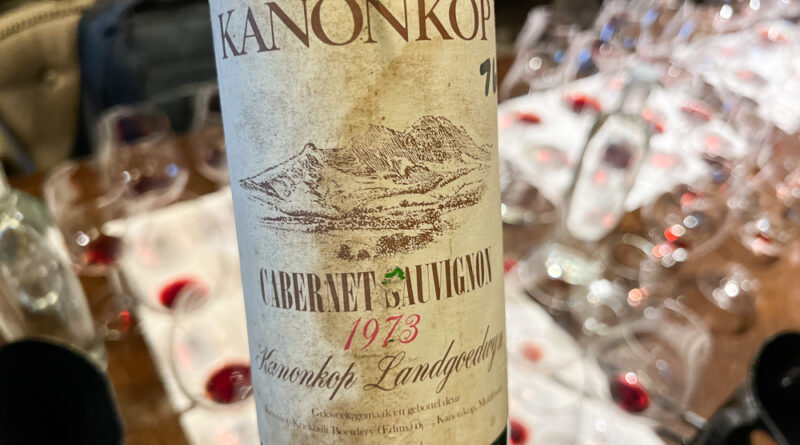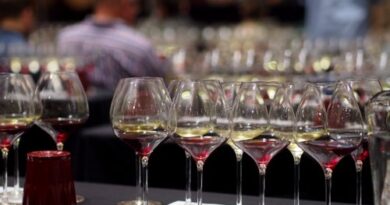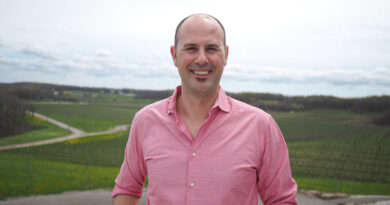50 years of Kanonkop, one of South Africa’s leading wineries
Johann Krige (proprietor) was in town with Abrie Beeslaar (winemaker) in a tasting that celebrated 50 years of Kanonkop, one of South Africa’s leading wineries. Their first release of a wine under the Kanonkop brand was in 1973, at a time when the South African wine scene was very different. ‘It has taken a lot of energy and time and grey hair – and eventually no hair – says Johann, who was there at the start.
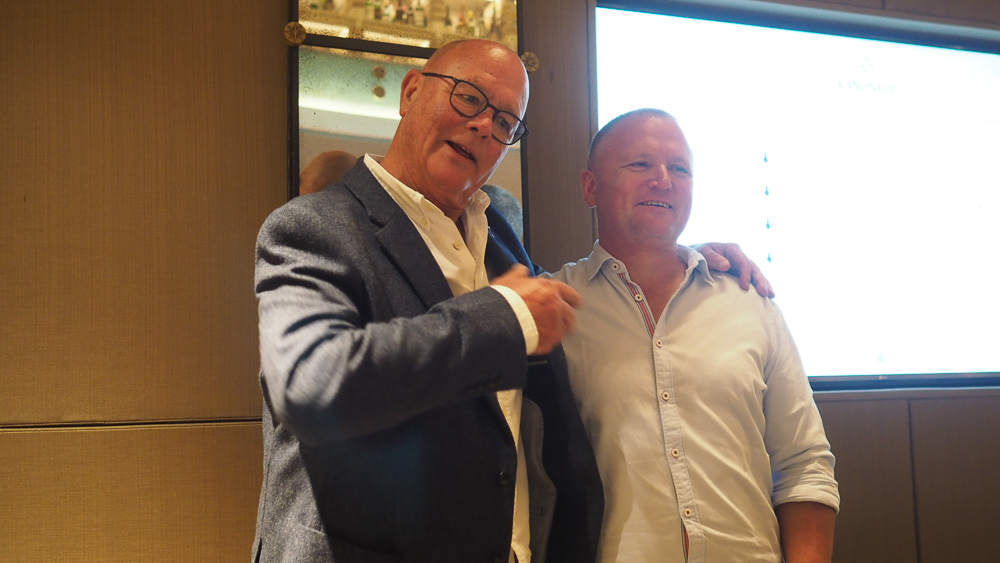
They began with a quick history:
- 1903 The Sauer family, Johann’s great grandparents, bought the Uitkyk farm
- 1929 Major Sauer sells the farm, but Paul Sauer, Johann’s grandfather, keeps the portion that is now Kanonkop. He was interested in quality, and knew about the importance of soils and slopes, and so kept this bit.
- 1942 The winery was built
- 1968 Jan Boland Coetzee was appointed the first winemaker. But Paul Sauer never wanted to bottle the wines: they all went to the Stellenbosch Farmers winery, which was a sort of cooperative system that, along with the KWV, dominated the whole of the industry. Stellenbosch Farmers had their own half-a-dozen brands, so Kanonkop’s wine would likely have gone into one of these.
- 1973 Along with Jan Boland Coetzee, Johann’s father decided to bottle some wines under the Kanonkop label. Still, most of it remained with the coop, because there was no export market for South African wine.
- 1980 Beyers Truter replaces Jan Boland Coetzee as winemaker.
- 1981 The first Paul Sauer, a Bordeaux-style blend, is released.
- 1983 Johann Krige decides to leave the coop and bottle everything under the Kanonkop label. ‘You’d go to Stellenbosch Farmers and choose which tanks of your own wines you’d like to bottle,’ he says. ‘They’d take the rest.’ He recalls going to meet them as a young lawyer and telling them they weren’t having any of the wines.
- 1991 Beyers Truter wines IWSC Winemaker of the Year award, despite the ongoing trade sanctions.
- 2002 Abrie Beeslaar joins Kanonkop, and after a year working under Beyers Truter, takes over as winemaker. ‘Beyers appointed me,’ says Abrie. ‘Johann said don’t reinvent the wheel: you don’t have to win anything. In hindsight, this was the best advice you could give a young winemaker: not to innovate, but to refine what has been done before. Kanonkop is focused on terroir, rather than my interpretation.’
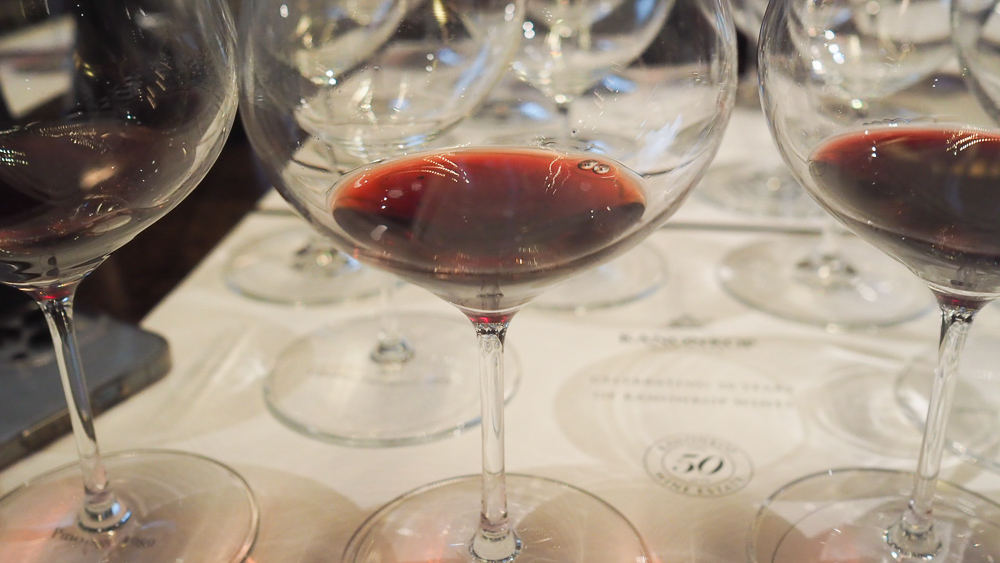
Abrie then described how things are, and how they are changing at Kanonkop. In terms of farming, ‘we have always tried to be responsible,’ he says. They do cover cropping, use natural predators, do minimal tilling and they have been removing virused vines. In the future they want to introduce cattle and implement respectful pruning practices to increase the lifespan of the vines. They are also doing ecological restoration: what did the farm look like 100 years ago? They want to avoid monoculture and are propagating indigenous fynbos with a view to establishing fynbos coridoors, and they are also replanting all the open spaces they can find with plants that are supposed to grow there. They are adding raptor posts and owl boxes for rodent control.
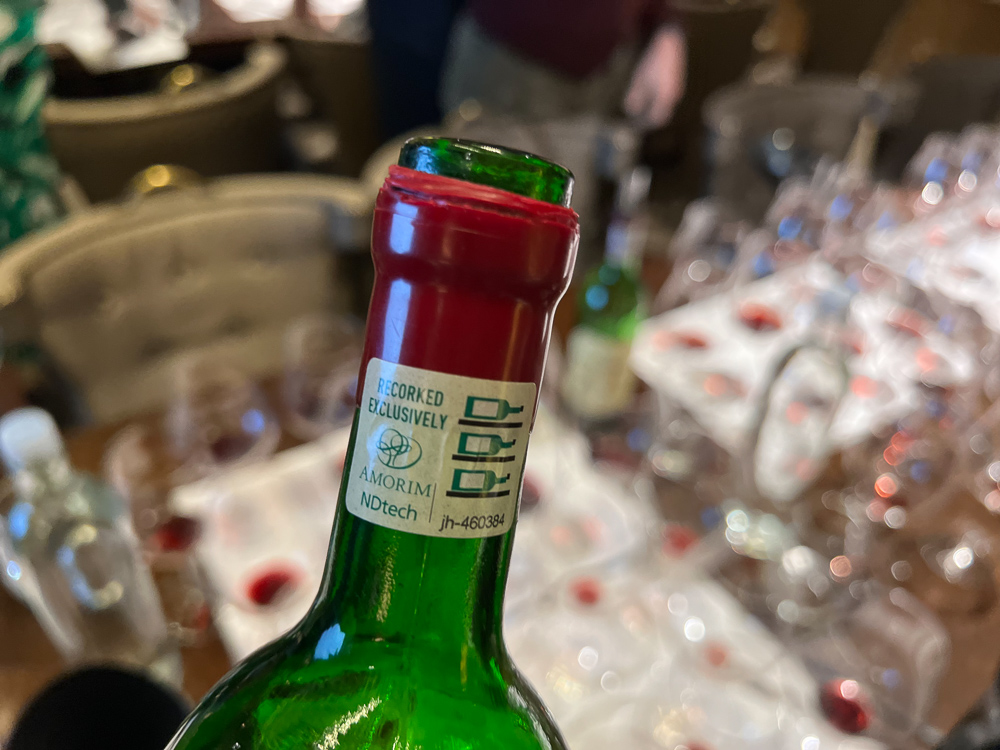
In terms of viticulture, Pinotage is grown as bush vines, while Cabernet is trellised. When they tried trellising the Pinotage the berries got 20-30% bigger. Cabernet is planted N-S because they want sunlight on the bunches, and they have planted a clone, C46, that is naturally low yielding but gives great quality. Pinotage is mostly on the slopes: deep red soils, in which the roots go down 4-5 m. These oakleaf soils are young granite-derived soils that are too vigorous for Cabernet. The Cabernet is on Glencoe soils in lower lying areas. These are weaker soils with lots of Koffieklip.
They destem everything and use optical sorting, and then everything is fermented the same way in large rectangular open-top fermenters. Pinotage needs acidification, and ferments fast because its juice has a high nutrient content with more amino acids, so as soon as they taste bitterness they press. ‘It is a challenging variety,’ says Abrie, ‘but for me it is probably the most rewarding.’
In 2000, they decided to begin holding back 6000-8000 bottles of each vintage, to be released at 10 years of age. This has gone very well, and helps people understand the ageworthy nature of these wines.
Paul Sauer: this is Kanonkop’s famous Bordeaux-style blend
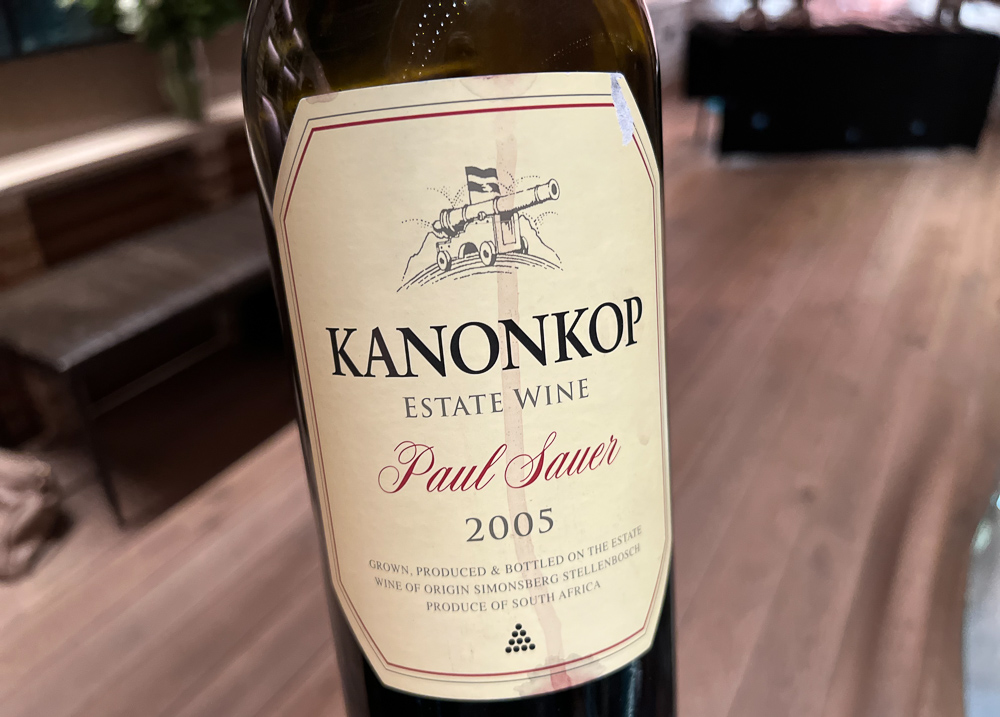
Kanonkop Estate Paul Sauer 2005 Stellenbosch, South Africa (magnum)
Bold and grainy with sweet blackcurrant fruit, some chalk and lovely texture. Cherry and blackberry fruit on the palate: really fine, and ripe but fresh. I really like the combination of sweet fruit and fine-grained tannins. This is beautifully expressive and drinking perfectly now. 96/100
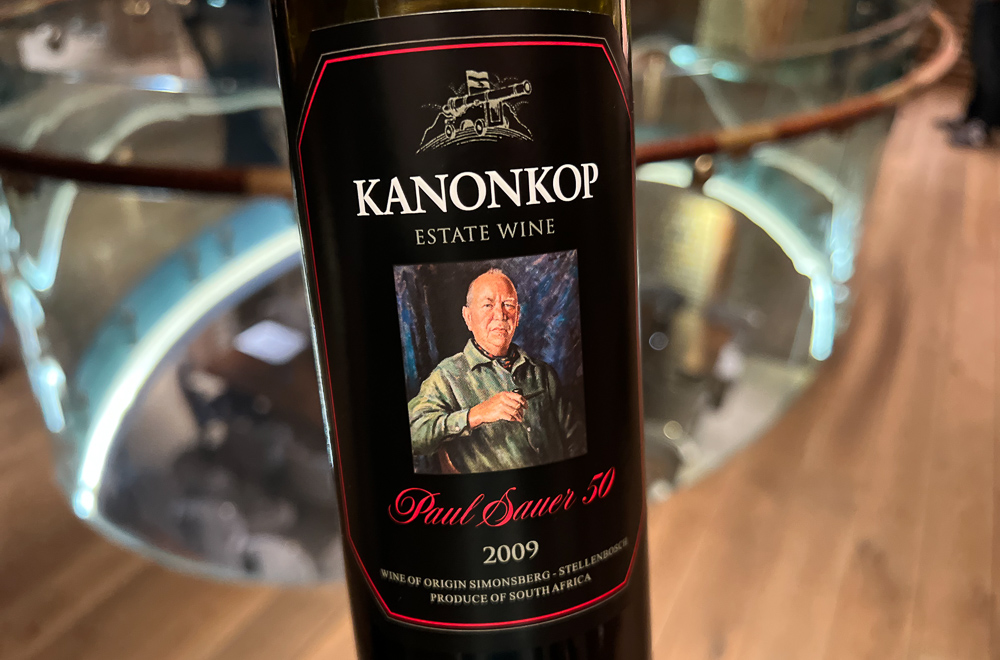
Kanonkop Estate Paul Sauer 2009 Stellenbosch, South Africa
Vivid blackcurrant nose. Sweetly fruited, gravelly and dark. Has some sleek cherry and blackcurrant fruit with nice tannins. Refined and polished with some youthful character still. Sleek and appealing. 94/100
Kanonkop Estate Paul Sauer 2014 Stellenbosch, South Africa
14% alcohol. Fresh and angular with nice detail to the blackcurrant and blackberry fruit, with spice, herbs and tar as well as good acidity and some gravel notes. Firm with lots of potential, finishing grippy. 94/100
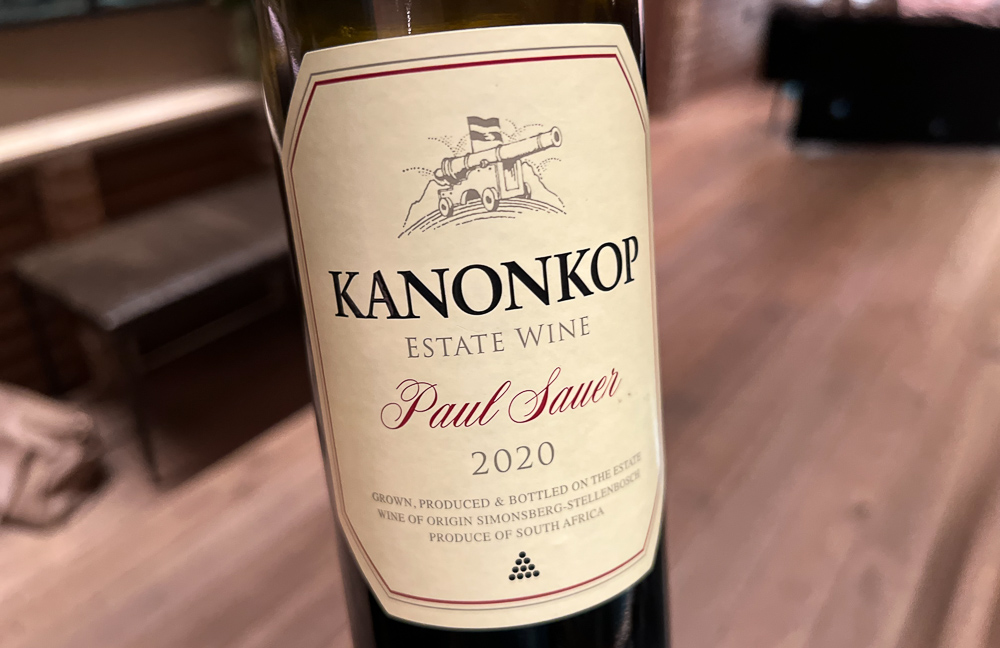
Kanonkop Estate Paul Sauer 2020 Stellenbosch, South Africa
13% alcohol. Fresh, linear and precise with lovely black cherry and blackcurrant fruit as well as red fruits and spice. Vivid and pure with nice blackcurrant notes and a touch of redcurrant freshness on the finish. The oak is superbly integrated. Such precision. 96/100
Pinotage: a wine that they are famous for
Kanonkop Estate Pinotage 1989 Stellenbosch, South Africa
Some growing season rain – a cooler year. Fresh, structured and refined with sweet cherry and berry fruits, showing some softness and the tannins. Has hints of spice and earth but the emphasis is on beautifully sweetly spiced cherry fruit, showing lovely tannin structure and acidity. 97/100
Kanonkop Estate Pinotage 1999 Stellenbosch, South Africa
13.5% alcohol. A warm, dry growing season. Sweetly aromatic with ripe strawberry and cherry fruit. Dense palate with lovely red fruits and some spicy structure. Firm, a bit meaty and with a lovely fresh finish. Has good intensity, and is still very fruity, and is evolving well. 95/100
Kanonkop Estate Pinotage 2006 Stellenbosch, South Africa
14% alcohol. A windy year with modest rain and heat. Bold, dark, lush and generous with bold blackberry and cherry fruit. Has great concentration and depth with richness and ripeness. Fine spicy finish. 94/100
Kanonkop Estate Pinotage 2013 Stellenbosch, South Africa
14.7% alcohol. Fresh and direct with lovely acidity under the primary cherry and raspberry fruit, showing nice grip as well as purity. Lots of potential for the future: nice focus here. 96/100
Kanonkop Estate Pinotage 2020 Stellenbosch, South Africa
In the past we were going for fruit,’ says Abrie. ‘Now we are not just looking for fruit but elegance.’ Vivid and fresh with some spicy, savoury, cedary new oak evident, alongside ripe cherry and plum fruit. Bold and ripe but well defined with oak too present in the mix, but this has potential for development. 93/100
Cabernet Sauvignon
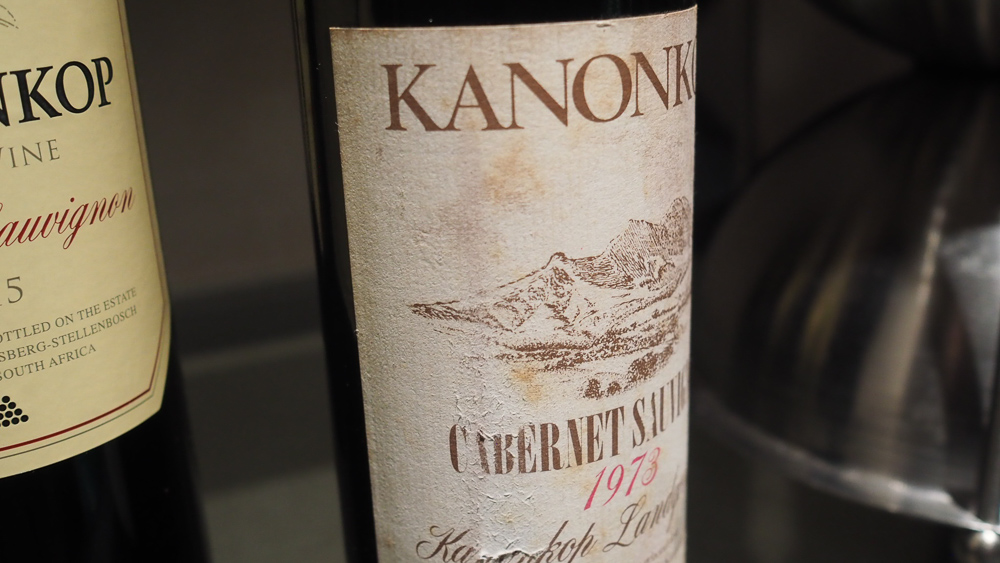
Kanonkop Estate Cabernet Sauvignon 1973 Stellenbosch, South Africa
The debut! Warm, sweet and herby with a hint of earth. Has some iodine but also some fruit: fresh and expressive with lots of interest. Spice, earth, dried herbs. 95/100
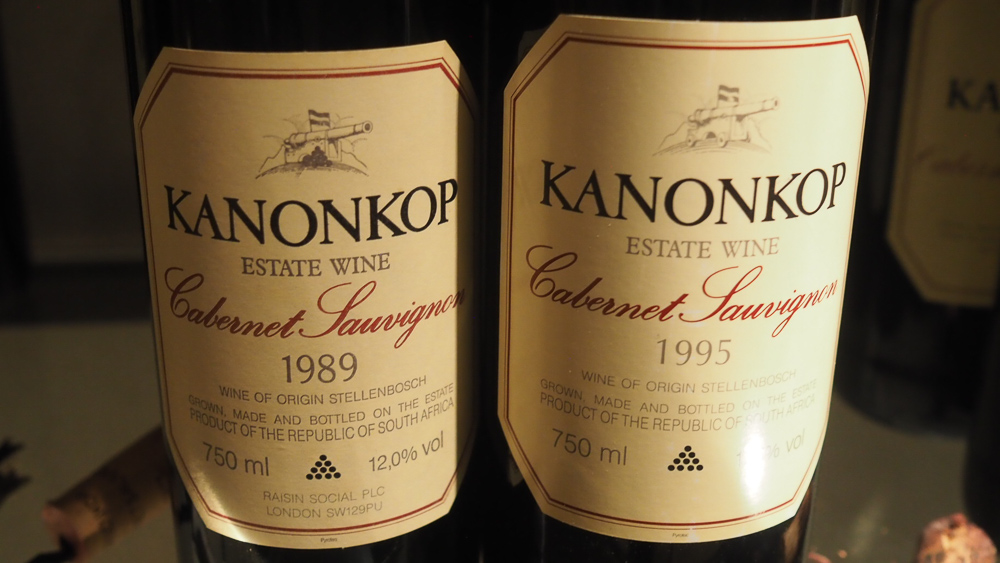
Kanonkop Estate Cabernet Sauvignon 1989 Stellenbosch, South Africa
12.2% alcohol. Dense and structured with sweet raspberry and cherry fruit with a hint of spice. This is fresh and direct with lovely acidity. Blackcurrant on the palate with nice acidity and a fine, spicy focus. Still has a sense of youth, despite its age. 96/100
Kanonkop Estate Cabernet Sauvignon 1995 Stellenbosch, South Africa
13.5% alcohol. Textured and fresh with some blackcurrant and black cherry fruit as well as some earth and caramel. Has hints of chocolate and earth with some malty notes. Mellow maturity. 93/100
Kanonkop Estate Cabernet Sauvignon 2001 Stellenbosch, South Africa
14% alcohol. Nicely dense with sweet cherries, plums and blackcurrant. Nice texture here with some lushness, but also has good structure with nice tannins. Really expressive. 95/100
Kanonkop Estate Cabernet Sauvignon 2009 Stellenbosch, South Africa
14% alcohol. Highly aromatic with a chalky edge to the blackcurrant fruit. Has haunting green hints. The palate has lovely flesh with a nice green edge to the blackcurrant fruit, with some olive savouriness. Fine and detailed. 95/100
Kanonkop Estate Cabernet Sauvignon 2015 Stellenbosch, South Africa
14.7% alcohol. Concentrated, ripe and broad with blackcurrant, black cherry and lovely warmth. Grainy and fine with sweet black fruits, fine tannins and notes of cinnamon, cedar and spice. Rich and appealing with a sweet core. 94/100
Kanonkop Estate Cabernet Sauvignon 2018 Stellenbosch, South Africa
Bold, fresh, sweet blackcurrant fruity. Quite primary with great concentration, and some oak well integrated into the bold blackcurrant fruit. Sweet fruit profile allied with finesse. 94/100
See also: Kanonkop Black Label Pinotage vertical tasting
Find these wines with wine-searcher.com

